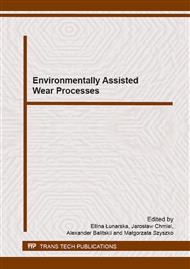p.1
p.7
p.13
p.19
p.25
p.33
p.39
p.45
Electrochemical Hydrogen in Metals - Can we Effectively Control this Harm?
Abstract:
The problem under consideration concerns the prevention of absorption of hydrogen in the processes of corrosion and electroplating of all industrially used metals with the aim of the modification of chemical and physical properties of base metal surface. Its properties change towards better brightness and soldering, minimal porosity and hydrophilicity of surface, increase of hardness and wear resistance. All these properties were evaluated by means of appropriate test equipment. Residual stresses in Cr coating by phase transformation, beginning in the electroplating process, acted in combination with absorbed huge quantity of hydrogen in intrinsic defects in the steel base. Internal stresses in the base/coating region resulted in severe deterioration of the durability of steel parts, as identified by static or sign-variable fatigue tests. The new stress-step technique makes possible an analysis of H content as a function of the depth in base metals and its distribution in coating metal .
Info:
Periodical:
Pages:
1-6
Citation:
Online since:
December 2014
Authors:
Price:
Сopyright:
© 2015 Trans Tech Publications Ltd. All Rights Reserved
Share:
Citation:


